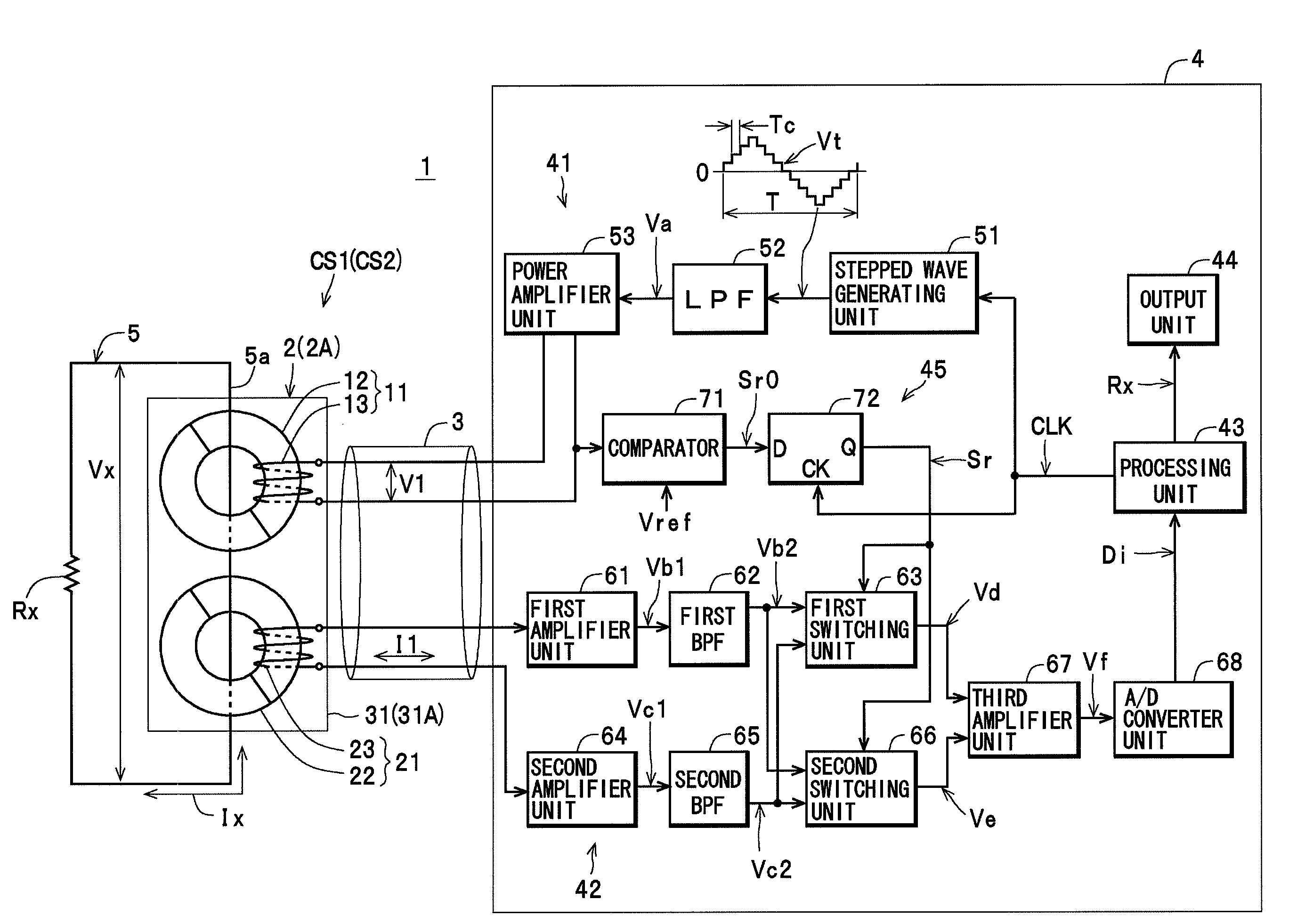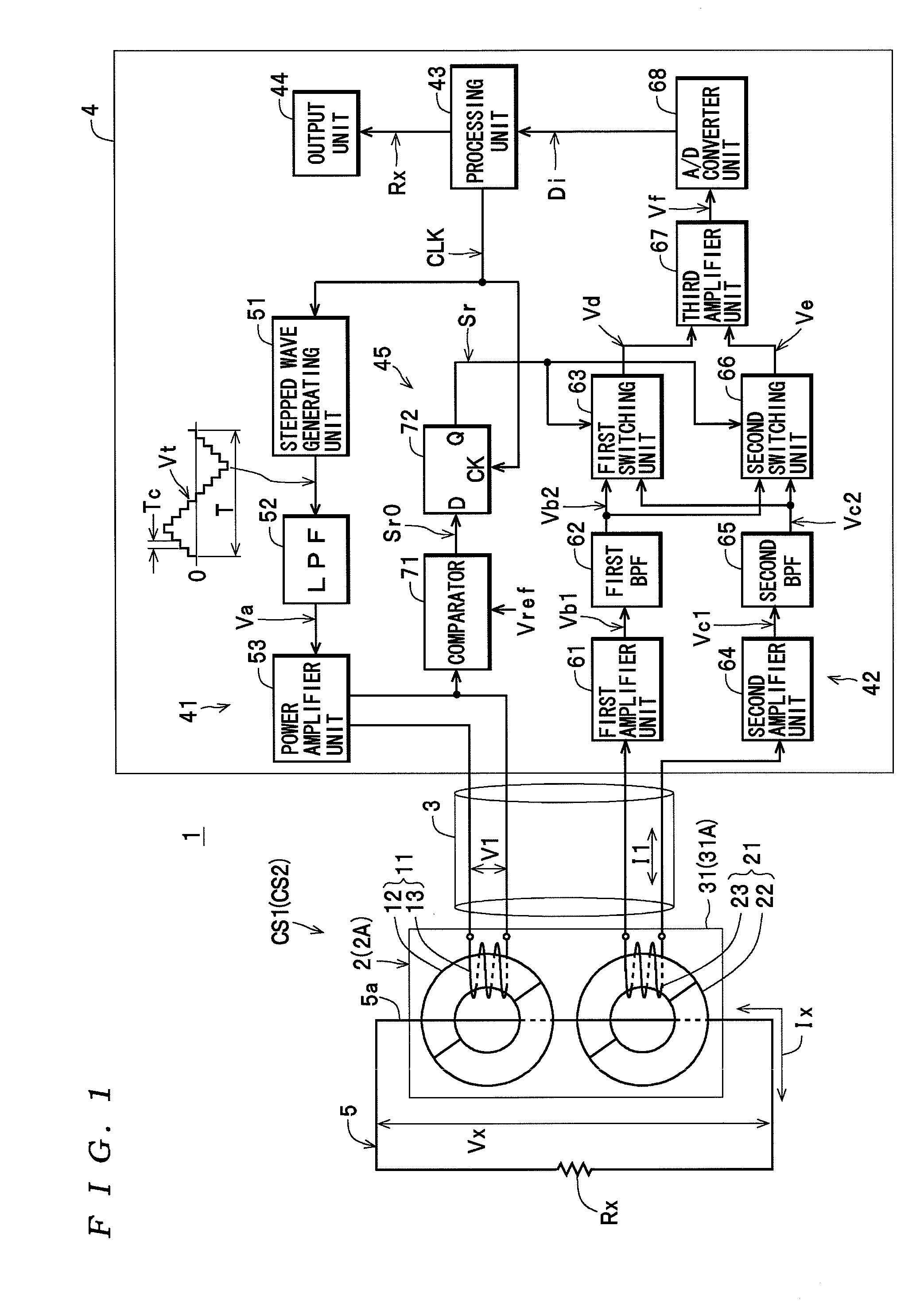Resistance measuring apparatus
a technology of resistance and measuring equipment, applied in the direction of resistance/reactance/impedence, earth resistance measurement, instruments, etc., can solve the problems of large precision drop, high manufacturing cost, and high precision loss, and achieve sufficient detection gain, remove such normal-mode noise, and reduce manufacturing costs
- Summary
- Abstract
- Description
- Claims
- Application Information
AI Technical Summary
Benefits of technology
Problems solved by technology
Method used
Image
Examples
Embodiment Construction
[0077]Preferred embodiments of a resistance measuring apparatus according to the present invention will now be described with reference to the attached drawings.
[0078]First, the construction of a resistance measuring apparatus 1 will be described with reference to the drawings as a first and second resistance measuring apparatus according to the present invention.
[0079]The resistance measuring apparatus 1 shown in FIG. 1 includes a clamp sensor CS1, and an apparatus main unit 4 connected to the clamp sensor CS1 via a cable 3, and is constructed so as to be capable of measuring the resistance value Rx for the resistance (i.e., loop resistance) of a measured circuit 5.
[0080]As shown in FIG. 10, as one example the clamp sensor CS1 includes a clamp unit 2 that clamps onto the measured circuit 5 and a grip portion 6 that holds the clamp unit 2 so that the clamp unit 2 is freely openable and closable. As shown in FIGS. 1, 10, and 11, the clamp unit 2 includes an injection clamp unit 11, a...
PUM
 Login to View More
Login to View More Abstract
Description
Claims
Application Information
 Login to View More
Login to View More - R&D
- Intellectual Property
- Life Sciences
- Materials
- Tech Scout
- Unparalleled Data Quality
- Higher Quality Content
- 60% Fewer Hallucinations
Browse by: Latest US Patents, China's latest patents, Technical Efficacy Thesaurus, Application Domain, Technology Topic, Popular Technical Reports.
© 2025 PatSnap. All rights reserved.Legal|Privacy policy|Modern Slavery Act Transparency Statement|Sitemap|About US| Contact US: help@patsnap.com



